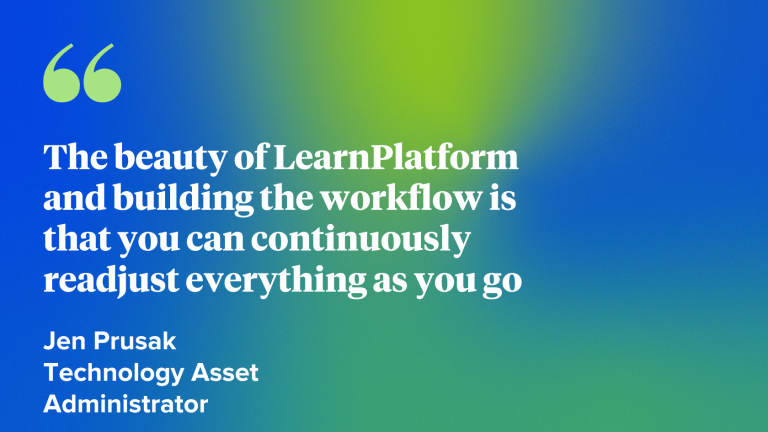As more states consider student data privacy legislation, many districts face challenges ensuring compliance with ever-changing regulations. When a new Utah law mandated that districts track the sharing of student personally identifiable information (PII) outside the Local Education Agency, Jordan School District realized they needed support.
The district had previously implemented LearnPlatform by Instructure for edtech management as part of a statewide program. However, Ross Rogers, one of the district’s Digital Learning Specialists, recognized they weren’t taking full advantage of the solution for privacy vetting. With the support of Student Data Privacy officer Caleb Olson and Digital Teaching & Learning administrator Jared Covili, Rogers took the lead and began deepening the district’s use of LearnPlatform.
Today, Jordan School District successfully leverages LearnPlatform to ensure all digital tools in use are compliant with the state’s student data privacy law. It provides visibility into tool usage, stores data privacy agreements (DPAs), and acts as a single source of truth for staff as to what tools are approved. The solution also helps maintain efficient and transparent edtech vetting processes that ease the burden on staff.
Read on to learn about the steps Rogers and his team at Jordan School District took to manage their edtech ecosystem to ensure compliance and impact more proactively.
Starting With the Data
The team’s first step to deepen their LearnPlatform adoption was to dig into edtech usage data provided by their Inventory Dashboard. From that data, Rogers realized that only around 20% of the 3.6k+ edtech tools being accessed by staff and students were approved for use. This highlighted the need for more thorough, transparent, and collaborative edtech request and vetting processes.
Taking Control of EdTech Requests
Once he grasped the high-level state of edtech use in Jordan School District, Rogers leveraged LearnPlatform to centralize the edtech request process for classroom educators and standardize vetting criteria to ensure data privacy compliance.
All requests and approvals now go through LearnPlatform, allowing educators to see what tools are available and approved via their District Library and view the status of new tool requests submitted.
As part of the request process, Rogers found that it was crucial to provide documented rationale when tools were denied. Doing so also helped him educate staff on what criteria he was looking for and ‘red flags’ in new tools so they were empowered to do pre-vetting before requesting new tools.
Not only does this lighten the edtech request load for Rogers and his team, but it helped staff feel engaged and involved in the process.
Ensuring Cross-Functionality
Building a strong edtech ecosystem is about more than just compliance–it’s a shared responsibility amongst educators and subject matter experts across the organization.
Vetting and approving different kinds of tools require input from cross-functional individuals with unique expertise. For Jordan School District, centralizing information in LearnPlatform created more meaningful reporting and helped expand the tool review process across different departments. Rogers also made edtech requests, vetting, and approval information easily accessible on a district website that serves as a communication hub and guided gateway to LearnPlatform for staff. This gateway also ensures visibility to parents and community stakeholders for transparency and metadata dictionary compliance.
This cross-functional approach helped Rogers ensure compliance and alignment on edtech vetting across the district. It also enabled him to build a larger data privacy team, standardize policies and criteria, and establish confidence in the safety and quality of edtech being used.
"Managing Jordan School District's student data and online privacy has been made less complicated with LearnPlatform,” Rogers stated. “It's easy to use, well-organized, and makes my job much less stressful."
What’s Next for Jordan School District?
Rogers and his team plan to continue pursuing efficient, evidence-based edtech management by leveraging new automated workflows in LearnPlatform to make cross-functional, collaborative review and approval of edtech tools even easier.
Building administrators in the district will also gain site-level edtech usage data to understand usage better and make informed decisions about tools, implementation, and training in their building. By partnering closely with LearnPlatform by Instructure, Jordan School District will continue to proactively approach edtech management as a collaborative exercise that supports students, educators, and community stakeholders.
Looking to dive deeper into managing your own edtech? Check out these additional resources:



